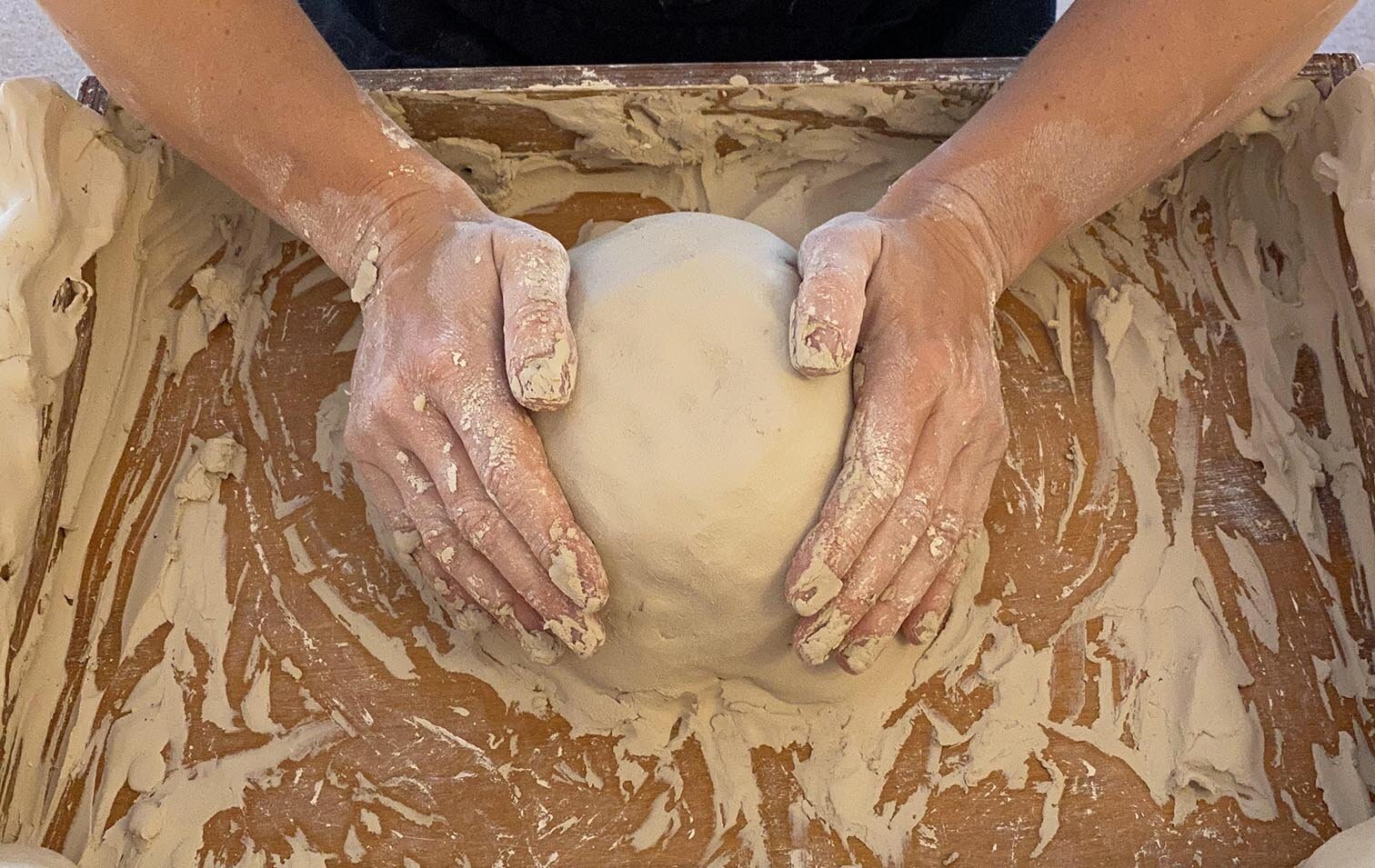The 'clay field' is a large, flat box filled with smooth clay. With closed eyes one makes contact with the material and allows the hands to find their way through touching, scratching, digging, kneading, patting, beating ... until shapes start to emerge. Scenes become created, destroyed, recreated ... telling one's story. At the end of a session, there will be no art object to take home, except an intense and transformative experience.
Clay Field Therapy® is touch therapy. The haptic sense of touch is the most fundamental of human experiences. Universally infants experience safety and love through touch; being rocked and held soothes and settles them. Love, sexuality, but also violence are primarily communicated through touch. Our skin boundary becomes invaded through inappropriate touching, through accidents and medical procedures. The vast majority of traumatic memories involve touch.
As the hands touch the clay they will remember these formative, implicit experiences. The smooth texture, the weight and resistance of the clay will evoke attachment patterns, developmental setbacks and traumatic events. This does not occur in a cognitive way, but as learnt action patterns and felt sensations. In a safe and supportive setting, the hands of clients will find their way out of restriction, collapse and frozen fear into growing trust and fulfilment, because the clay has the unique ability to feedback any contact we make with it. Initially clients’ hands may expect something cold, unavailable or disgusting, because this was their experience in the past, but almost inevitably they will search for increasingly reliable contact, balance in the relationship with the material and self-fulfilment through it.
The therapeutic focus is neither on symptoms nor on the story of what-happened, but on the innate urge to find a more adequate response to the world at hand. In this way the encounter at the clay field allows us to gradually rewrite our biography. Emerging PhD research shows that Clay Field Therapy® is deeply therapeutic, particularly for children with learning and behavioural difficulties – and for traumatised adults.
Watch the video for a case study showing Clay Field Therapy® with a boy diagnosed with ADHD.





